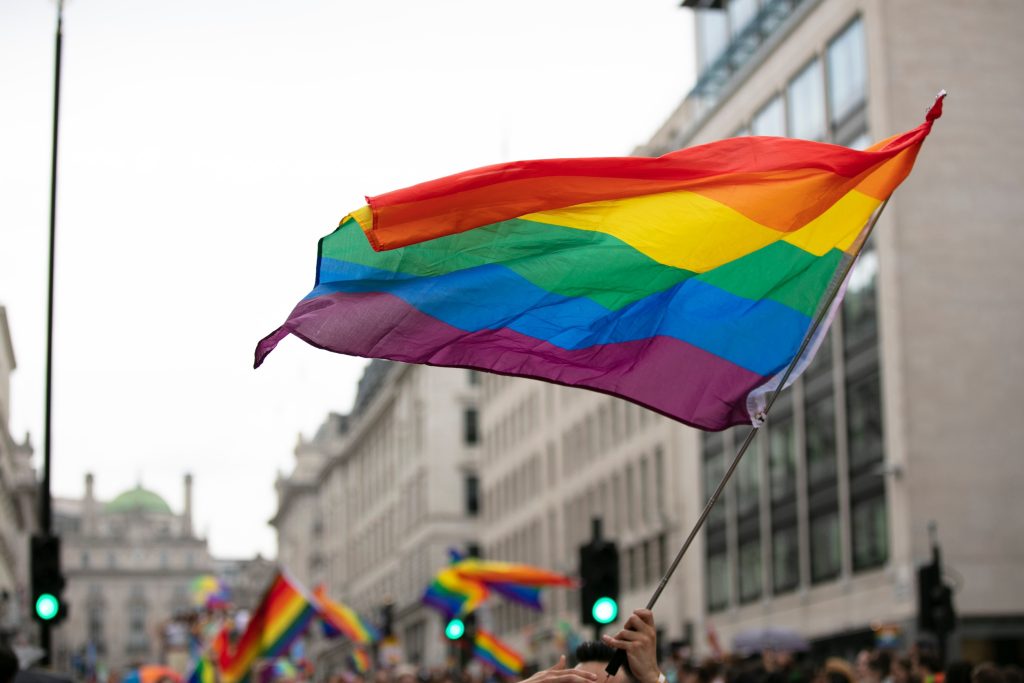
www.thegospelcoalition.org
Beware Social Myths
When the Kansas City Chiefs advanced to the Super Bowl in 2024, media attention was not focused on the team or their potential to win another championship but on Taylor Swift, the girlfriend of Chiefs player Travis Kelce.
Some of the chatter was from adoring “Swifties,” some from people annoyed with Swifties, and some from those convinced the entire situation was a Biden campaign operation for Swift to announce her endorsement of the President’s campaign. The result of this conspiracy theory was that supporting Swift’s appearance at the Super Bowl was culturally coded as support for Biden, whereas opposition to her appearance was a tacit support of Trump.
In reality, the most famous musical artist in the world was going to the biggest sports event in America to support her boyfriend. But for a short time, her appearance took on massive cultural significance. It represented something much larger than the sum of its parts.
This phenomenon is common to the digital age. A cultural event (or nonevent) deals with some real issue but through a process of memeification comes to represent something larger. Technology, particularly social media, encourages us to submerge serious cultural issues under a symbolic discourse that I call “social myth.”
Social myths are a disordered way of engaging with legitimate cultural issues relevant to our public witness as Christians. The problem isn’t that we’re engaging in what some call the “culture war.” Certain causes are worth fighting for, like the right to life. The culture war usually deals with causes that are serious and require bold, faithful advocates to fight for them.
But social myths don’t require deep thinking, evidence, or rhetorical skill. They only require us to act according to mythology—and the emotional benefits are significant. We feel as if we’re doing something profoundly important, even though all we’re doing is shouting into the void.
The problem with social myths is they distract us from the core issues, seducing us into meaningless identity signaling that doesn’t advance our causes or the gospel.
Nature of Social Myths
Social myths are the lifeblood of the culture war, and they have four main qualities.
1. Social myths are grounded in legitimate cultural issues.
Social myths begin with a real cultural issue that deserves vigorous public debate. Common topics include abortion, LGBT+ controversies, race, social justice, gun control, voting rights, and immigration. These are matters of great importance, and Christians should be speaking prophetically about them in the public square in a manner that glorifies God and edifies our neighbors. But social myths don’t help us do that.
We feel as if we’re doing something profoundly important, even though all we’re doing is shouting into the void.
An example of this is the Bud Light boycott of 2023, where conservatives began a boycott after transsexual TikTok influencer Dylan Mulvaney posted a sponsored video to social media promoting Bud Light. Conservatives, among them many Christians, objected to the promotion of transgender identities by a beloved beer brand. At root is the normalization and even romanticization of transgender narratives in secular culture, a trend that has influenced young people to question their gender identity and in some cases to medically transition. Cultural efforts to normalize and promote the mutilation of our bodies are serious to Christians.
This point is important because we can go wrong in arguing all culture war topics are trivial and a distraction. Social myths deal with real issues. People are motivated to engage with these myths because they’re directly invested in them. My concern is that once these serious issues get transformed into myths, spectacle overwhelms substance. In this case, an Instagram Bud Light ad by a transexual came to mythically symbolize a broader culture war conflict over sex and gender.
2. Social myths grow primarily on social media.
Social myths are born and grown online because the form of social media is highly conducive to abstraction and identity signaling. That isn’t to say they don’t enter the “real world,” but they only do so after they’ve been cultivated online.
For example, in 2022, representative Lauren Boebert of Colorado “joked” at a Christian conference that Christ didn’t have enough AR-15s to keep his government from crucifying him. To a large extent, the online discourse on gun control, as on many topics, has lost sight of the reality of gun violence and individual liberties and has been transformed into a social myth, which is precisely what Boebert took into the “real world” when she made the joke. People make memes for and against gun control and speak in mythic terms, abstracting the issue from its real-world implications and turning it into a culture war symbol.
She wasn’t making a serious argument for Second Amendment rights. And once the video of the joke made it to Twitter, her critics weren’t seriously arguing for gun control. Boebert was making a claim about her position in the broader culture war, which is why she could make a ridiculous and offensive joke about our Savior using a gun to avoid the sacrifice he was sent to make for our sins. It wasn’t about the content of the joke but about what the joke symbolized. Boebert was participating in a social myth. But as I noted earlier, this statement began as a response to an online debate.
Social myths take off online because of social media’s highly visual nature. Culture war memes aren’t designed to persuade but to get shares and likes. Social media incentivizes us to reduce complex, nuanced issues into tweets and TikToks. When there’s no space for meaningful discussion about a controversial issue, you’re reduced to transforming it into symbolic form, abstracting it from all substance.
3. In social myths, symbolism usurps substance.
The defining feature of social myths is that they take a real issue and abstract it until the issue itself is all but lost. The symbol of the issue, not the issue itself, becomes the main topic. When Boebert’s “joke” went viral, the discourse wasn’t about gun control; it was about her joke. When Taylor Swift came to the Super Bowl, the discourse wasn’t about the desirability of another Trump or Biden presidency; it was about Swift as a symbol. At that point, the myth takes on a life of its own.
Culture war memes aren’t designed to persuade but to get shares and likes.
Memes are perhaps the best example of the “symbol over substance” nature of social myths. They tend to pursue maximum virality over persuasive power. The substance of a debated topic is submerged under the image of the topic portrayed in a meme. The goal is to reproduce the meme through shares, rather than to persuade anyone or honestly engage with an issue.
Importantly, social myths can be engaged in without touching the real and serious cultural issues they’re rooted in. People can operate entirely on the level of social myth without even understanding the basic ethical, legal, and religious variables figuring into a controversial topic. It isn’t hard to imagine someone who fiercely advocates for freeing Palestine or for ending abortion yet doesn’t understand the essential issues involved. They can do this with passion and conviction not because they believe in the substance of the cause but because they’re operating on the level of social myth.
4. Social myths take on cosmic significance for those participating in them.
It’s not just that social myths shift our attention from the substance of an issue to something different. They come to symbolize something cosmically bigger. They symbolize grand narratives in the broader culture war, which is at root a war for civilization itself. Once an issue gets transposed into this higher register, the stakes are raised, justifying an otherwise inordinate amount of time arguing and posting about the issue.
An example of this can be seen in the vitriol some progressives have for Chick-fil-A. As with all social myths, this one is grounded in a real issue. The owner of Chick-fil-A has donated money to what the left views as anti-LGBT+ causes. For a progressive buyer of chicken sandwiches, LGBT+ issues are a significant concern. Even though Chick-fil-A and its charitable arm no longer donate to “anti-LGBT+” causes, the brand has become symbolically coded according to culture war terms. To eat a chicken sandwich isn’t to eat a chicken sandwich but to make a political statement that LGBT+ people don’t deserve civil rights.
If that sounds dramatic, consider the story of Adam Rubenstein, a former New York Times staffer. In an article for the Atlantic, Rubenstein describes a corporate icebreaker session in which he was asked to name his favorite sandwich. When he said it was Chick-fil-A’s spicy chicken sandwich, he was immediately reprimanded by a Times human resources representative who said, “We don’t do that here. They hate gay people.”
The key is that a simple act takes on mythic significance far beyond material reality. Is it true that some money from your chicken sandwich purchase goes to the owner, who then donates to causes that progressives oppose? Yes. But it’s such an infinitesimal contribution that it’s meaningless—unless it becomes part of a larger mythic stance for LGBT+ rights. In that case, boycotting Chick-fil-A and publicly shaming people for enjoying their sandwiches is an important and cosmic blow to the anti-LGBT+ agenda.
A pro-choice social media user posting a meme on abortion might think, I’m not just advocating for a woman’s right to choose. I’m participating in the defense of human rights against fascist theocrats. When participating in a social myth, you engage in a global quest for justice. You participate in a grand effort to reclaim civilization for your side. But in reality, shaming Rubenstein for liking a particular sandwich did nothing for the LGBT+ cause.
What Can We Do?
If social myths are unhealthy ways of engaging with legitimate issues, what’s the alternative? Can we participate in the culture wars constructively, or should we retreat to our enclaves and quietism?
The first thing we need to recognize is that social media isn’t a good space for meaningful dialogue. It’s designed to create an addiction to superficial images and ideas. To the extent we use social media for making statements about cultural issues, it should be to point people away from social media to spaces where longer, more nuanced arguments can be made.
Social media isn’t a good space for meaningful dialogue.
Second, we must be judicious about our engagements on cultural issues. You don’t need to speak about every issue that goes viral. This doesn’t make you a coward; it makes you prudent. Ask yourself whether your voice will effectively witness to your audience on this particular issue. Being selective about what you engage with is also important because often an event will go viral without all the relevant information coming out, and when the facts emerge, people feel compelled to double down even if they were wrong.
Third, ask yourself whether you’re engaging with the substance of an issue or merely with symbols. To use a progressive example, are you talking about LGBT+ rights or chicken sandwiches?
Fourth, be cautious about using memes to engage in cultural issues. Most memes don’t effectively communicate much; they signal the virtue (or vice) of the person creating them. I won’t go so far as to say all memes participate in social myth, but I do think the vast majority obscure substance and rely on abstraction.
Fifth, work on engaging with cultural issues in local communities, with your neighbors and those in your church. Embodied efforts won’t always involve the substance of an issue, but unlike social media, a conversation over coffee isn’t designed according to the whims of an algorithm.
However we engage with the many legitimate cultural issues that face us, we must do so with courage and love, as wise as serpents and gentle as doves. People are confused about sex, gender, the sanctity of life, and a host of other issues. Christians have always made the gospel known through advocating for just governmental policies and social norms. The challenge is to do this in a way that doesn’t get absorbed into the internet’s trivializing gaze.















